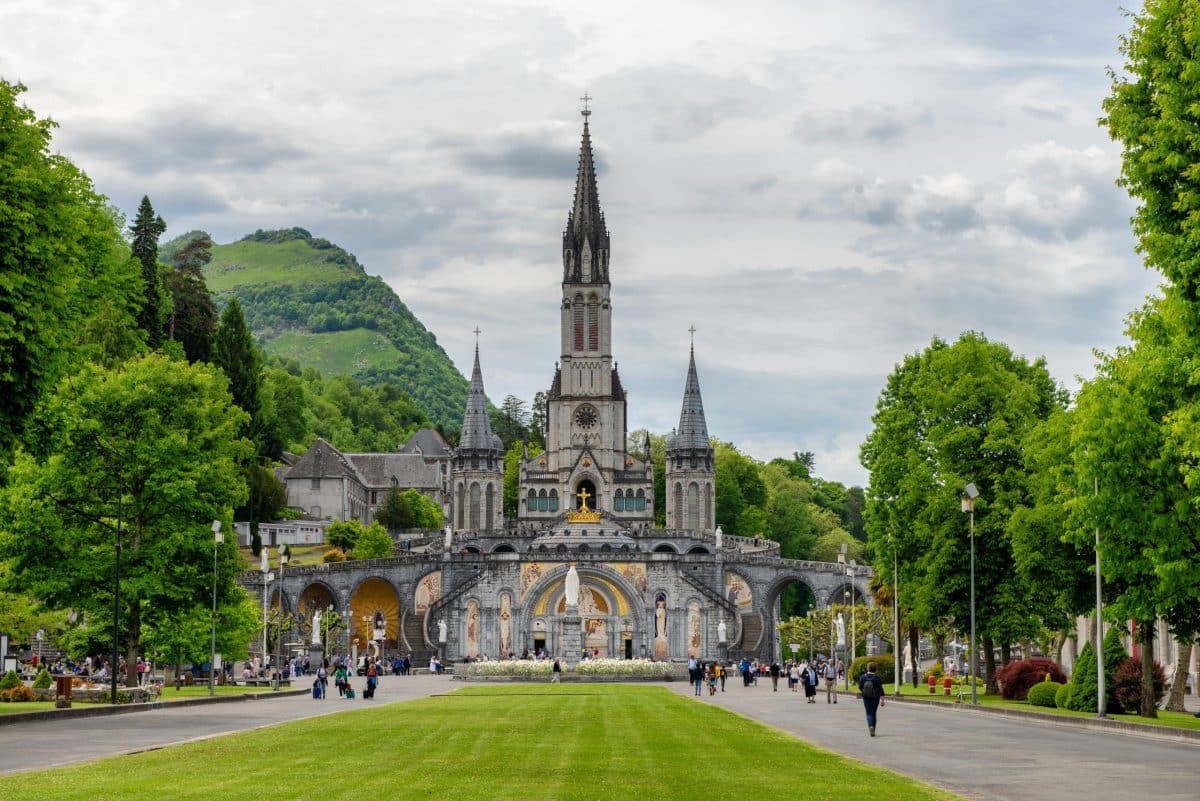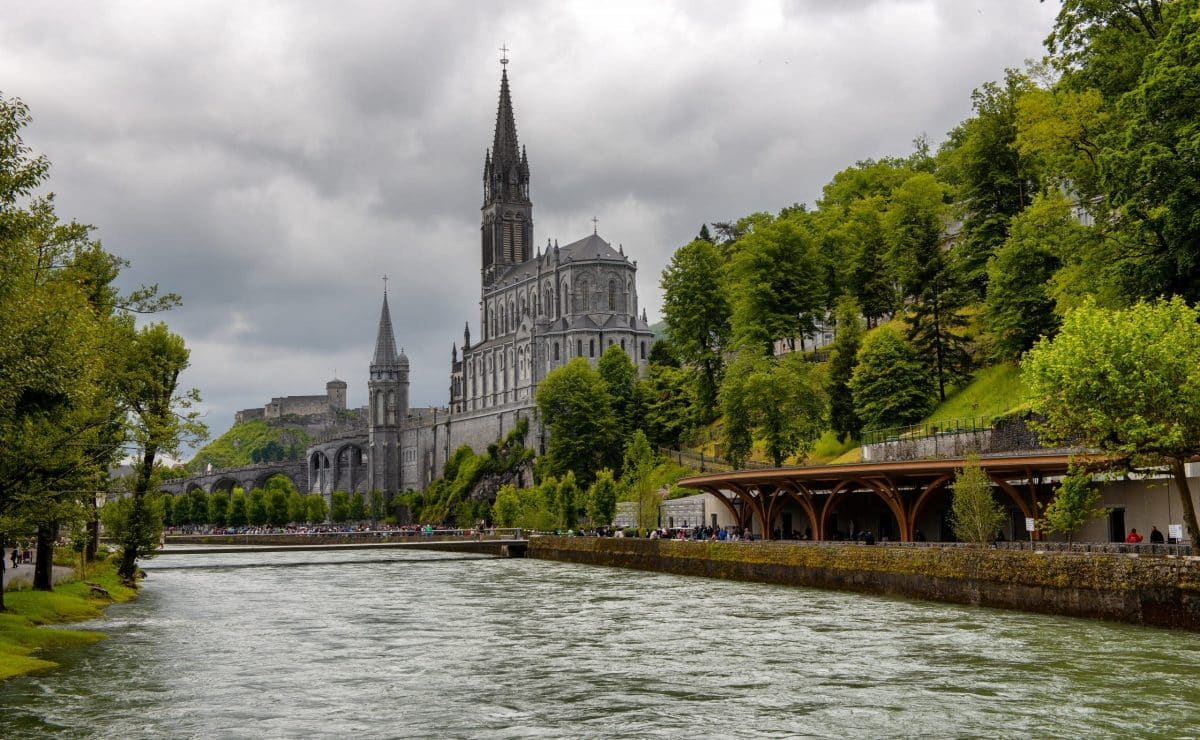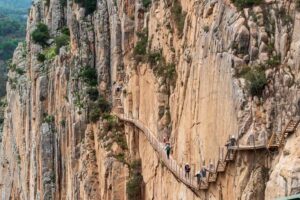
If you want to embark on a journey filled with spirituality and devotion, it means you need to explore the most revered destinations in Europe. What links and similarities unite the venerated pilgrimage to Lourdes with the iconic Camino de Santiago?
Through a thorough analysis, we will explain how these two sacred routes intertwine. You will also discover that every step taken on them can lead to profound reflections on faith, healing, and human purpose. Don’t miss this spiritual feat that transcends borders and times.
Índice de contenidos
Lourdes: A world-renowned sanctuary

Lourdes, a small town in southwestern France, has become one of the most important pilgrimage destinations in the world. Its fame is largely due to the Marian apparitions reportedly witnessed by a young girl named Bernadette Soubirous in 1858.
According to tradition, the Virgin Mary appeared to her eighteen times in a nearby cave, now known as the Grotto of Massabielle. The miracles attributed to Lourdes are numerous, such as physical healings and spiritual conversions.
Many pilgrims seek information from our organizing company of the Camino de Santiago de Compostela to learn more about the site. We explain all the details about this highly frequented place.
Generally, walkers come to the sanctuary in search of healing and spiritual comfort. For the Catholic Church, Lourdes is an officially recognized pilgrimage site, with thousands of faithful attending each year to experience the divine presence.
The religious and spiritual significance of Lourdes for pilgrims is profound. Faith in the intercession of the Virgin Mary and the possibility of receiving physical and spiritual healing attract believers from all over the world.
It is clear that Lourdes is a place of hope and spiritual renewal. Here, faith is strengthened, and it is possible to experience the power of divine love.
The Camino de Santiago: A centuries-old journey

The Camino de Santiago is one of the oldest and most popular pilgrimage routes in the Christian world. With a history dating back to the 9th century, the journey is linked to the discovery of the tomb of the Apostle James in the cathedral of Santiago de Compostela, in Galicia, Spain.
Over the centuries, the French Camino de Santiago journey from Sarria has been traveled by millions of pilgrims from various cultures and religious beliefs. And this is the minimum distance to be granted the Compostela.
The main route, known as the French Camino, starts from the Pyrenees and crosses various regions of Spain until it reaches Santiago de Compostela. However, there are numerous secondary routes that converge on the same destination, each with its own beauty and challenges.
The experience of walking the French Camino to Santiago is unique. Pilgrims walk kilometers every day, facing physical and emotional challenges while traversing varied landscapes and meeting new people and cultures.
Camaraderie among the visitors is an integral part of the journey. You will appreciate the solidarity and mutual support during the trek.
The connection between Lourdes and the Camino de Santiago
Lourdes, a Marian sanctuary in France, and the Camino de Santiago, a pilgrimage route across Spain, are separated by hundreds of kilometers. However, they are united by a shared devotion.
Pilgrims who walk the Portuguese Camino to Santiago (one of the routes that converge on the final destination) often carry hopes similar to those who travel to Lourdes in search of healing and spiritual connection.
The experience of walking kilometers, facing physical and mental challenges, and finding companionship on the route reflects the search for faith and healing that also occurs in Lourdes. Additionally, the presence of the Virgin Mary and Saint James as intercessors is a constant in both pilgrimages, where believers place their trust in the possibility of miracles and divine guidance.
Thus, although separated by geography, Lourdes and the Camino de Santiago are united by the strength of faith and the search for the transcendental.
Preparation for the pilgrimage
Before starting the journey, it is important to prepare physically, mentally, and spiritually. The walk can be physically demanding, especially in the different stages of the Northern Camino to Santiago. Therefore, we recommend being in good shape and carrying the right equipment.
In this regard, wear comfortable footwear that protects your feet during long days, versatile clothing to face any weather conditions you encounter, and a lightweight bag with essentials for your journey. This way, you can fully enjoy the pilgrimage experience.
Similarly, if you choose to walk the stages of the Camino de Santiago from Tui don’t forget to consider the spiritual aspect. The pilgrimage is an opportunity for personal reflection and inner renewal.
In short, dedicate time to prayer and meditation, prepare your body, heart, and mind for the transformative experience that awaits you.









